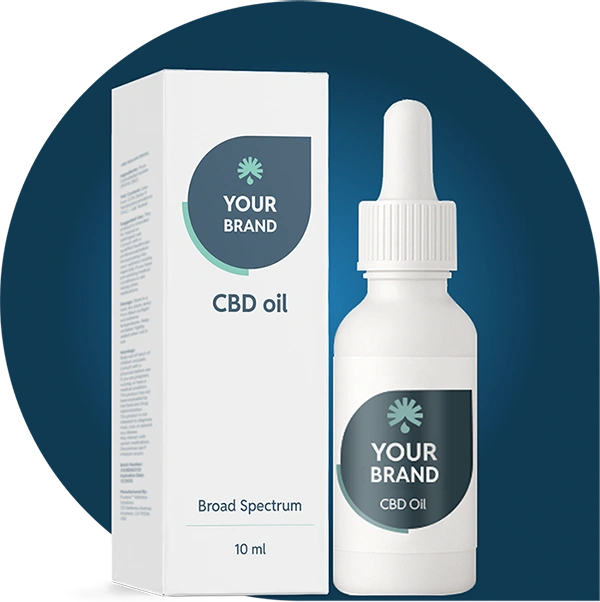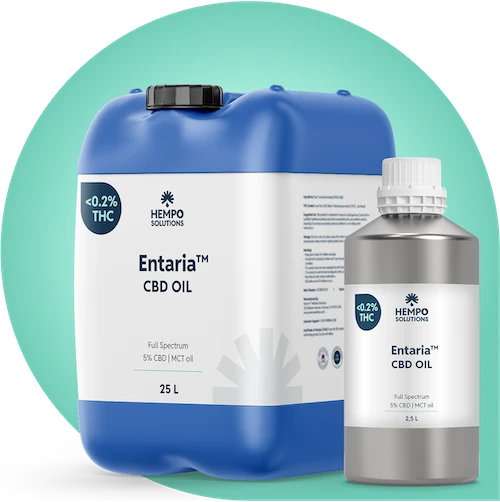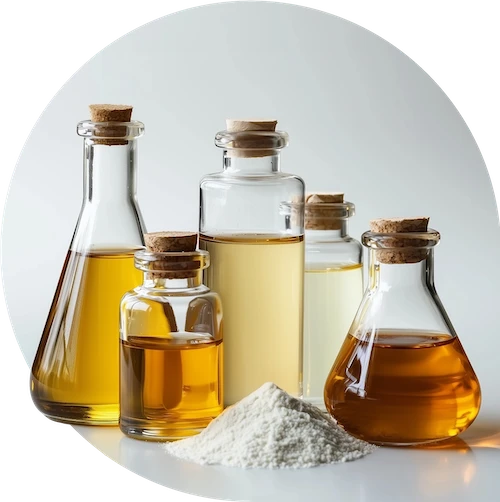What is third-party laboratory testing?
Because rules for CBD products differ from country to country, third-party laboratory testing is an essential part of quality control. It involves using independent laboratories to check what is actually in a product, giving brands reliable information beyond their own in-house testing.
This testing helps businesses meet local legal requirements and market expectations. In many places, it is required by law or by retailers before products can be sold. THC limits can vary, with some countries allowing low levels (often around 0.2 – 0.3%) and others requiring products to be completely THC-free.
Including third-party testing in production is vital for meeting regulations, maintaining consistent quality, and building trust with customers and regulators.
Independent, Unbiased Testing
Independent third-party laboratories offer objective testing carried out by professionals who have no stake in the product. This reduces bias and helps brands demonstrate their commitment to quality and transparency when dealing with regulators, retailers, and customers.
Ensuring Accurate Labelling
Accurate labelling is essential for legal compliance and customer trust. Third-party testing confirms that the cannabinoid content in a product matches what is on the label, helping brands avoid mislabelling issues and ensuring customers get exactly what they expect.
Detecting Contaminants
Beyond cannabinoid levels, independent testing checks for harmful contaminants such as heavy metals, pesticides, residual solvents, and microbes. This ensures that products meet health and safety standards and are safe for customers in different markets.
Certificate of Analysis (COA)
A Certificate of Analysis (COA) is an official document provided by an independent third-party laboratory after testing is complete. It offers a clear, unbiased report of what is in the product, helping brands demonstrate transparency, prove compliance with local regulations, and build trust with customers and retailers.
A COA verifies essential details about a CBD product, such as its cannabinoid profile, THC content, and potential contaminants. This is especially important because legal THC limits vary by country. Some markets allow low levels of THC (around 0.2 – 0.3%), while others require products to be completely THC-free.
One of the most important sections on a COA is the THC content line. Brands should understand common terms used by laboratories:
-
ND (Not Detected): Means the lab could not find THC above its detection limit. Often used to support “THC-free” claims.
-
LOQ (Limit of Quantification): The lowest level the lab can accurately measure. For THC-free products, this is often around 20-100 ppm, depending on the lab’s method. A COA may list THC as “<LOQ 20 ppm” to indicate non-detectable levels.
-
Total THC: Shows the combined amount of delta-9-THC and THCA. This is critical for verifying compliance with local laws.
A standard COA typically includes:
-
Name and accreditation details of the testing laboratory.
-
Batch or lot number to match the specific production run.
-
Date of testing and report issue.
-
Detailed cannabinoid profile (CBD, THC, minor cannabinoids).
-
Heavy metals screening results
-
Testing methods used.
-
Signature or approval of the responsible laboratory personnel.
Including up-to-date COAs with your products is not just a regulatory expectation in many markets, but also a clear way to show your commitment to safety, quality, and transparent business practices.

Benefits of Third-Party Laboratory Testing
Third-party laboratory testing offers significant advantages for CBD brands and manufacturers looking to compete in a crowded and highly regulated market. While testing confirms cannabinoid profiles and checks for contaminants, its real value lies in supporting business growth, compliance, and trust.
Key benefits for CBD Retail Brands include:
-
Builds brand credibility: Demonstrates a commitment to transparency and high quality, reassuring customers, retailers, and regulators.
-
Market differentiation: Sets your products apart from competitors by proving they meet safety and quality standards.
-
Supports legal compliance: Helps ensure your products meet local requirements, making it easier to navigate differing international regulations.
-
Strengthens retailer relationships: Many retailers and distributors require up-to-date COAs as a condition for stocking products.
-
Reduces business risk: Minimises the chance of regulatory issues, customer complaints, or recalls due to mislabelling or contamination.
-
Ensures batch consistency: Confirms that production runs consistently match their specifications, supporting reliable, repeatable quality.
-
Builds customer trust and loyalty: Customers are more likely to choose brands they see as safe, reliable, and transparent.
Including thorough, independent testing as part of your production process is not just a quality-control step, it is a strategic investment in your brand’s reputation and long-term success.
Different Types of Third-Party Laboratory Tests
When reviewing Certificates of Analysis (COAs) for CBD products, you will see that different laboratory tests are used to check quality and safety. Each test provides specific information about the product. Understanding these methods helps brands know what to expect in lab reports and how to choose reliable suppliers.
Common testing methods include:
-
Liquid Chromatography (LC, HPLC, or UPLC):
Used to separate and measure cannabinoids in a sample. The product is dissolved in a solvent and passed through a high-pressure system that separates compounds by weight. A detector measures the amounts of each cannabinoid, such as CBD and THC, with high accuracy. -
PCR Testing (Polymerase Chain Reaction):
Used to detect biological contaminants like bacteria, mould, yeast, and fungi. This technique matches DNA in the sample against known harmful microorganisms. PCR testing is essential for ensuring products are microbiologically safe and comply with health standards. -
Mass Spectrometry (MS):
An advanced method to identify and measure different compounds. It works by turning the sample into ions and analysing their properties. Mass spectrometry is especially useful for detecting trace contaminants such as heavy metals and pesticides, and can also confirm cannabinoid content.
Regulatory Challenges in the CBD Industry
The European CBD industry is growing quickly, but regulations differ widely between countries. Many markets lack clear or consistent rules, creating uncertainty for businesses about what is legally required.
This inconsistent regulation can make it harder for brands to plan, launch, and sell products across different regions. Third-party laboratory testing helps reduce this risk by providing reliable, independent proof of quality, safety, and compliance, even when rules vary.
Business Challenges in Uncertain Markets
CBD businesses often operate in markets where regulations change frequently or vary between regions. This uncertainty makes it difficult to maintain consistent quality and meet local requirements.
Third-party laboratory testing helps address these challenges by providing independent, accredited proof of what is in a product. Reliable testing results can support documentation for regulatory submissions, retailer requirements, and customer inquiries. This gives brands the evidence they need to demonstrate compliance and maintain market access, even when rules differ or evolve over time.
Quality Risks for Consumers
Without reliable verification, CBD products can vary widely in quality, creating real risks for consumers. Issues such as inaccurate cannabinoid content, undeclared THC levels, or contamination with pesticides and heavy metals undermine customer safety and trust.
Third-party laboratory testing directly addresses these risks by confirming the product’s contents through independent analysis. Brands that invest in thorough testing can show customers that their products meet high safety and quality standards, building long-term loyalty and confidence.
Protecting the CBD Industry’s Reputation
The credibility of the entire CBD industry depends on consistent quality and transparency. When untested or low-quality products reach the market, they damage trust not just in individual brands but in the category as a whole.
Third-party laboratory testing plays a key role in protecting the industry’s reputation. By verifying product safety and labelling accuracy, independent testing raises standards across the market. This commitment to transparency and quality helps ensure that the CBD sector continues to grow sustainably and earns the confidence of regulators, retailers, and customers alike.
Summary
Third-party laboratory testing is a vital part of producing safe, reliable, and legally compliant CBD products. By working with accredited independent laboratories, brands can verify cannabinoid content, confirm that THC levels meet local legal requirements, and ensure products are free from harmful contaminants.
At Hempo Solutions, we combine our own in-house laboratory testing throughout the production process with accredited third-party testing for final batch verification. Our third-party partners do not just check cannabinoid profiles. They also test for residual solvents, pesticides, and heavy metals to ensure comprehensive safety and quality compliance.
A clear and detailed Certificate of Analysis (COA) is more than just a regulatory expectation. It is an essential tool for demonstrating transparency and building trust with customers, retailers, and regulators.
In a competitive and evolving market, investing in thorough and reliable testing helps CBD product manufacturer deliver consistent quality, reduce risk, and strengthen their reputation. For brands looking to grow sustainably and stand out, third-party laboratory testing is not just an option but a crucial strategy for long-term success.







